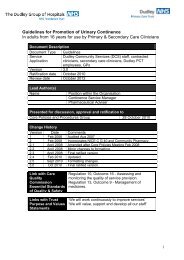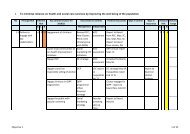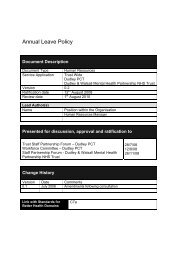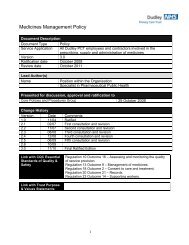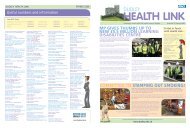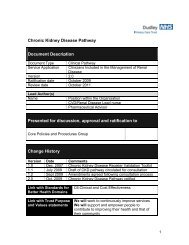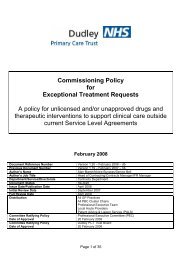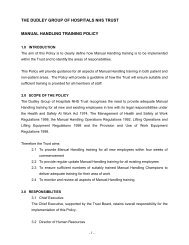Dudley Strategy for Tackling Health Inequalities 2010-15
Dudley Strategy for Tackling Health Inequalities 2010-15
Dudley Strategy for Tackling Health Inequalities 2010-15
- No tags were found...
Create successful ePaper yourself
Turn your PDF publications into a flip-book with our unique Google optimized e-Paper software.
Conclusions:The general conclusions from the analysis of QOF outcomes is that practiceper<strong>for</strong>mance variance is very high and is not explained to a great extent bydeprivation factors. In summary:- There is a high level of under-reporting of prevalence, <strong>for</strong> all key vasculardiseases/conditions, particularly <strong>for</strong> hypertension- Deprivation factors are associated with lower prevalence recording <strong>for</strong> stroke andCHD- There is a great variation in practice per<strong>for</strong>mance <strong>for</strong> all vascular diseaseregisters <strong>for</strong> all indicators - prevalence recording, exception reporting, clinicaltreatment and control- There are a number of practices that are consistent poor per<strong>for</strong>mers.- There are high numbers of patients that are not being treated to optimum levels<strong>for</strong> blood pressure, cholesterol or blood sugar across the CHD, hypertension,stroke, diabetes and CKD registers- Differences in access due to deprivation was not evident in the access totreatment once a patient is on a disease register. This was highlighted by theQOF indicators on exception reporting, blood pressure and lipid measurement,drug prescribing and referral to LRMS.- Deprivation was a factor in relation to differences in outcome of treatment <strong>for</strong>some risk factors specifically the control of blood sugar and success at stoppingsmoking. It did not have an impact <strong>for</strong> the control of blood pressure or lipids.- Low access rates were noted <strong>for</strong> exercise referral programmes, but access tostop smoking services was high.RecommendationsThe <strong>Tackling</strong> <strong>Inequalities</strong> in life expectancy in areas with the worst health anddeprivation (Great Britain. Department of <strong>Health</strong>, <strong>2010</strong>) recommends 3 keyinterventions to provide a cost-effective way of reducing the gap in life expectancy inrelation to CVD:Increase the prescribing of drugs to control blood pressure by 40%Increase the prescribing of drugs to reduce cholesterol by 40%Double the capacity of stop smoking servicesThese have been taken into consideration in the following recommendations whichfocus in 3 areas:Ensuring strategies are in place <strong>for</strong> risk factor reduction, case-finding and earlydetection of the key vascular diseasesEnsuring that high risk groups can access and use services and achieveequitable treatment outcomes<strong>Tackling</strong> the variation in practice per<strong>for</strong>mance and raising the level of overallper<strong>for</strong>mance to ensure more patients are treated to optimum levels. This prioritywill be covered in Section 8.1 on primary care.72




